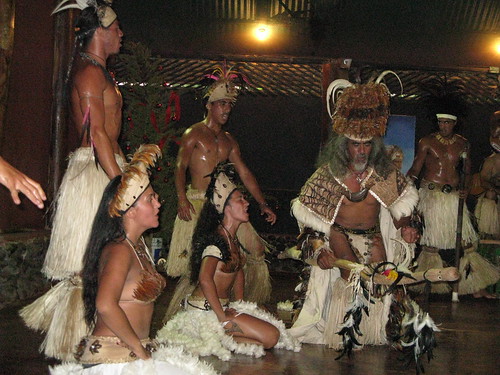In Easter Island, is the town farthest from any other inhabited place on the planet but is the place where you get more and more tourists. Reach the farthest place in the world is in itself a challenge full of curiosity and adrenaline. But here, almost 4,000 miles from any other inhabited place on the planet, other condiments, to the innate beauty of this archipelago of volcanic origin adds rich Polynesian culture and a history full of legends, myths and mysteries.

Photography by maryatexitzero
The island, located in the middle of the South Pacific Ocean and governed by the Chilean government since 1888, the place is also known as Rapa Nui (big land) and Te Pito o te Henua (navel of the world). In recent years, this place has become a destination for those who enjoy archeological tourism, ecological and adventure.
With 166 square kilometers and a triangular morphology, Easter has a subtropical climate, with 20 ° C average in the year, and is often crossed by fresh winds. Its surface ripples with slight dominated by three volcanic formations: Terevaka (511 meters), Poike (370 meters) and Rano Kau (400). In total there are about 70 craters, all inactive.
For the most part, the coast consists of cliffs, rocky edges, and there are only a few small sandy beaches. In some high points on the coastline or climb the volcanoes one can admire a unique horizon can observe the curvature of the earth.
Just walk a few blocks from the local airport Mataveri will reach the center of the capital, Hanga Roa, where, among colorful houses with gabled roofs, proliferate bars and restaurants typical craft shops and stores. A few years ago was installed here the first five star hotel. Until then, the offer was limited to small family enterprises, which still dominate the housing market.

Photography by Avodrocc
The sights of the island, declared a Unesco World Cultural and Natural Heritage in 1995, can be covered in four wheel drive vehicles, tricycles, bicycles, horses or just walk. If you choose to make a morning walk to the ceremonial village of Orongo is possible to taste the guavas growing wild beside the road and enjoy the soft sea winds (Tokerau). As a precaution should always be a windbreak to protect so fleeting and unexpected showers.
Rapa Nui National Park, created in 1935, where monuments and archaeological structures, ancient dwellings, burial platforms and carved and painted stones (petroglyphs and pictographs), occupies one third of the surface of the island. There, with a zeal becoming more pronounced, the guidelines authorized by the National Forestry Corporation warn visitors about the inviolability of that heritage.
According to local tour operators handle only between 2007 and last year, visitors to the island went from 55,000 to 65,000. They come here attracted by the mystery of the moai, huge funerary sculptures erected to provide spiritual protection to the natives (so far were found 887), seeking to explore the hidden trails of the island or with intent to dive in crystal waters which coastal bed has an exuberant variety of fauna and flora.
With about 4200 permanent inhabitants (of which almost half are from or Polynesian Rapa Nui), Easter faces a growing crisis: the challenge is to rise to a sharp increase in tourism demand and at the same time, take the necessary precautions to preserve their cultural heritage and prevent the pollution of their environment.
Speaking of history say that something in the eighteenth century came several Western navigators. The first, the Dutchman Jacob Roggeveen, who in 1722 named the place like Easter Island. It was followed by excursions English, Spanish and French. But according to the islanders, none are settled in place for its isolation and because they found sources of wealth here.

Useful facts:
Sleeping, eating, walking
* Hotels: Most include breakfast and prices range from $ 40-100 for single room.
* Curanto: food baked on stones buried, with fish, chicken, beef, potatoes, sweet potatoes, pumpkins and bananas.
* At night: dance shows with lilting rhythms of Polynesian dancers with skirts with natural leaves.
* Orongo: the ancient ceremonial city, the summit of the volcano Rano Kau. There was a competition between native youths for leadership of the tribes, which gave rise to the legend of the birdman.
Bon voyage!
Leave a Reply
You must be logged in to post a comment.
Recent Comments